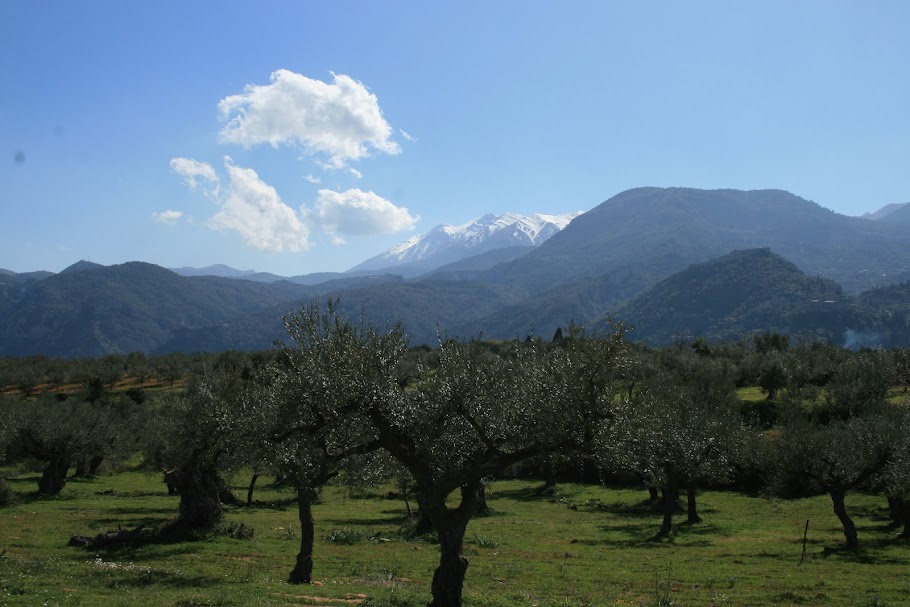Sparta is usually depicted as a bleak place and Spartans, lacking in art, architecture and even decoration. As with almost every other cliche associated with Ancient Sparta, that is wrong. Contrary to popular legend, Sparta produced both works of art and artists.
According to Conrad Stibbe in his excellent book Das Andere Sparta
(Philipp von Zabern, 1996) no less than nine Lacedaemonian artists are known to have worked in
Olympia alone. While the majority of these artists are described as
Lacedaemonian, in two cases, Syadras and Chartas, the artists are
explicitly referred to as Spartiate. While it is possible these were the
only exceptions in Spartan history, it is more likely that they are the
tip of the iceberg: the only surviving record over two and a half
millennia of other nameless Spartiate artists.
 |
| Arguably Sparta's most famous sculpture; dating from the early 5th century it is affectionately known as "Leonidas" -- although it is unlikely to actually depict him. |
Strikingly,
Stibbe notes that the known Lacedaemonian artists worked for other
states as well as Lacedaemon. That means they were recognized as
outstanding artists and worked professionally on commission, not just as
amateur artists adorning their own city’s monuments. Four of the nine
were said to be students of a famous Cretan sculptor, and several of
them engaged apprentices from other cities. Clearly, artistic work at
Olympia was “international” not parochial.
Stibbe
also notes that the Lacedaemonian sculptors worked not only in stone
but in wood, ivory, gold, and bronze. Ivory and gold were used
predominantly to decorate wood and therefore even if fragments of ivory
and gold are found it may be difficult, if not impossible, to
reconstruct the total work of art. As so often when trying to understand
Sparta and Spartan society, we are hampered by a paucity of
archeological evidence that may reflect an absence of original material,
destruction of the archeological record in earthquakes and flooding, or
simply inadequate archeological investigation. Troy, after all, was
considered mythical or fictional for almost two thousand years, until
one amateur fanatic revolutionized our understanding of the Mycenaean
period by insisting on digging in a spot that was not previously
investigated. The site of Sparta itself may have been investigated, but
much of Lacedaemon has never been systematically subjected to serious
archeological study and new discoveries in Sparta’s “outlying” cities
and temples may yet yield significant new finds.
 |
| An Example of Spartan Bronze Work |
An
example of this kind of discovery is a particularly beautiful stone
sculpture found on Samos that appears to be of Lacedaemonian origin. It
portrays a hoplite with long braids (as worn at this time exclusively in
Sparta) and with breast-spirals on the breastplate (also typical of
Laconian hoplites in art). Although not yet 100% confirmed, the marble
also appears to be Laconian. If this statute was indeed Lacedaemonian,
it would represent a significant discovery documenting more of Sparta’s
almost forgotten artistic golden age.
Meanwhile, we should not ignore the plethora of smaller art objects from bronze vessels and jewellery to statuettes and figurines found at Spartan sanctuaries which record a thriving industry for domestic craftsmanship if not high art. These are well catalogued by Reinhard Foertsch in his article "Spartan Art: It's Many Deaths," in Sparta in Laconia: Proceedings of the 19th British Museum Classical Colloquium, Dec. 1995 (Cavanagh, WG and S.E.C. Walker, eds.) The same publication contains an excellent article by Maria Pipili, "Archaic Laconian Vase-Painting," which highlights the sophistication and high quality of 6th Century Laconian pottery.
Altogether, archeological research suggests that art was more common and more valued in Sparta than is widely acknowledged today. Spartiates certainly bought works of art and dedicated art objects at their sanctuaries. The extent to which they engaged in production of art themselves will never be known but, as noted above with respect to the two sculptors, at least in some cases Spartans were professional artists.
In all my novels set in Sparta I attempt to convey the complexity and sophistication that this fascinating society displayed.

BUY NOW!
BUY NOW!
Meanwhile, we should not ignore the plethora of smaller art objects from bronze vessels and jewellery to statuettes and figurines found at Spartan sanctuaries which record a thriving industry for domestic craftsmanship if not high art. These are well catalogued by Reinhard Foertsch in his article "Spartan Art: It's Many Deaths," in Sparta in Laconia: Proceedings of the 19th British Museum Classical Colloquium, Dec. 1995 (Cavanagh, WG and S.E.C. Walker, eds.) The same publication contains an excellent article by Maria Pipili, "Archaic Laconian Vase-Painting," which highlights the sophistication and high quality of 6th Century Laconian pottery.
Altogether, archeological research suggests that art was more common and more valued in Sparta than is widely acknowledged today. Spartiates certainly bought works of art and dedicated art objects at their sanctuaries. The extent to which they engaged in production of art themselves will never be known but, as noted above with respect to the two sculptors, at least in some cases Spartans were professional artists.
In all my novels set in Sparta I attempt to convey the complexity and sophistication that this fascinating society displayed.

BUY NOW!
BUY NOW!




"Sparta is usually depicted as a bleak place and Spartans, lacking in art, architecture and even decoration."
ReplyDeleteAthenian propaganda.